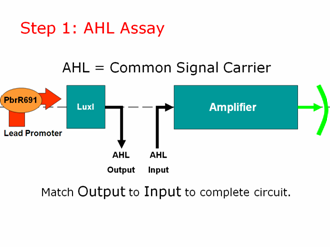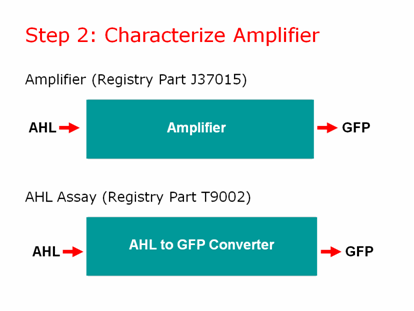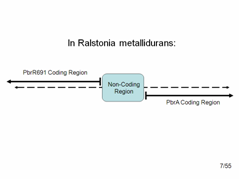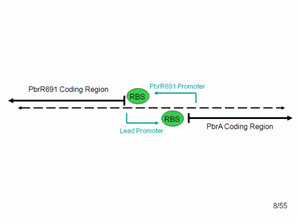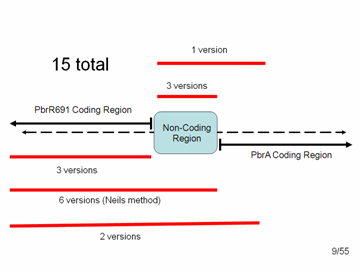\Experimental Steps
From 2007.igem.org
(Difference between revisions)
| Line 110: | Line 110: | ||
[[Image:step1lead.png|right]] | [[Image:step1lead.png|right]] | ||
| + | |||
We used the well characterized part BBa_T9002 for our AHL assay. These cells take in AHL and give us a straight GFP output, without amplification or a positive feedback loop. We created a calibration curve and planned to use these cells to test the amount of AHL coming OUT of our lead promoter in response to different amounts of lead. We would then separately test the amplifier by adding known concentrations of AHL to determine how much AHL is necessary to give us a GFP output. Then we can put both pieces of information together to give us a lead sensor.\ | We used the well characterized part BBa_T9002 for our AHL assay. These cells take in AHL and give us a straight GFP output, without amplification or a positive feedback loop. We created a calibration curve and planned to use these cells to test the amount of AHL coming OUT of our lead promoter in response to different amounts of lead. We would then separately test the amplifier by adding known concentrations of AHL to determine how much AHL is necessary to give us a GFP output. Then we can put both pieces of information together to give us a lead sensor.\ | ||
| Line 122: | Line 123: | ||
==Step 2: Characterize Amplifier== | ==Step 2: Characterize Amplifier== | ||
| - | |||
| - | |||
We characterized our amplifier and found some very unexpected results! | We characterized our amplifier and found some very unexpected results! | ||
The main difference between J37015 and T9002 is that there is a positive feedback loop in J37015. So we would expect J37015 to make much more GFP than T9002 at the same AHL concentrations. However, J37015 actually made LESS GFP. | The main difference between J37015 and T9002 is that there is a positive feedback loop in J37015. So we would expect J37015 to make much more GFP than T9002 at the same AHL concentrations. However, J37015 actually made LESS GFP. | ||
| + | |||
| + | |||
| + | |||
| + | [[Image:step2lead.png|right]] | ||
| Line 142: | Line 145: | ||
We obtained the genome of Ralstonia metallidurans. We then used PCR to pull out 15 different variations of the lead binding protein and lead gene. | We obtained the genome of Ralstonia metallidurans. We then used PCR to pull out 15 different variations of the lead binding protein and lead gene. | ||
| - | [[Image:Step31.png]] | + | [[Image:Step31.png|right]] |
| + | |||
The diagram shows what the top and bottom strands of the genome where the lead binding protein, PbrR691 and the lead promoter (within this Non-Coding Region) lie. PbrA is a resistance gene that was not involved in our system but is relevant to the genome. | The diagram shows what the top and bottom strands of the genome where the lead binding protein, PbrR691 and the lead promoter (within this Non-Coding Region) lie. PbrA is a resistance gene that was not involved in our system but is relevant to the genome. | ||
| - | [[Image:step32.png]] | + | [[Image:step32.png|right]] |
According to the literature, the forward lead promoter is within this noncoding region. After communicating with the group that originally found this protein, we also suspected that a constitutive promoter region for PbrR691 could be found in the reverse direction in this noncoding region. Therefore, we used PCR and cloning to simply combine the PbrR691 coding region and blue noncoding region to GFP, hoping that we would not need to express PbrR691 under pTet’s constitutive control to get a responsive lead detector. | According to the literature, the forward lead promoter is within this noncoding region. After communicating with the group that originally found this protein, we also suspected that a constitutive promoter region for PbrR691 could be found in the reverse direction in this noncoding region. Therefore, we used PCR and cloning to simply combine the PbrR691 coding region and blue noncoding region to GFP, hoping that we would not need to express PbrR691 under pTet’s constitutive control to get a responsive lead detector. | ||
| Line 154: | Line 158: | ||
In the end we had 15 different variations of parts that we could add to the registry: | In the end we had 15 different variations of parts that we could add to the registry: | ||
| - | [[Image:step33.png]] | + | |
| + | [[Image:step33.png|right]] | ||
| + | |||
3 = just the Lead Binding Protein, PbrR691. | 3 = just the Lead Binding Protein, PbrR691. | ||
Revision as of 01:47, 27 October 2007

